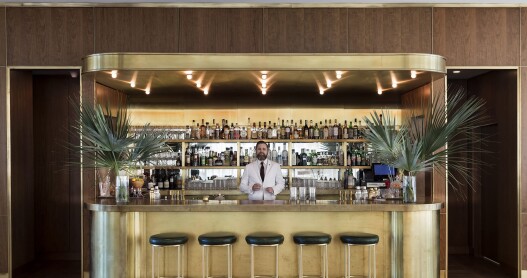Overview
When’s the best time to go to Charleston?
It’s hard to beat the mild temperatures of springtime in Charleston, when the azaleas, magnolias, and jasmine are in bloom. Locals cope with the summer humidity by boating or heading to the nearby beaches. In the winter, they string the palmetto trees with Christmas lights and doll up historic homes with festive decorations.
How to get around Charleston
The Charleston International Airport is located about 20 minutes from downtown Charleston by car. Taxis cost about $30, while shuttles—which run every fifteen minutes and don’t require reservations—cost $14 per passenger. Stay downtown so you can wander out your front door without worrying about transportation—sneakers or flats are recommended for the uneven sidewalks and cobblestoned streets, and bike taxis, known as “pedicabs” or “rickshaws,” are good for longer trips. The city’s Holy Spokes sharebike program has rental options that range from one hour ($8) to a year and allow quick trips around the peninsula.
A rental car (or a cab budget) is necessary if you plan to enjoy the beaches, golf courses, plantation houses, and surrounding sights, all of which are well worth the short drive out of town. Charleston is also an easy road trip away from places like Atlanta, Charlotte, Columbia, and Jacksonville.
Can’t miss things to do in Charleston
The best way to get to know the city? Get lost in the quieter streets downtown. Just wander the back alleys of a residential neighborhood like Ansonborough or Harleston Village. Then ramble through one of the myriad graveyards dotting the city for a taste of what makes Charleston unique.
Food and drink to try in Charleston
- With everything from Southern comfort classics to more adventurous cuisines, and white-tablecloth dining rooms to lunch counters, Charleston does dining right. Here, local ingredients dominate menus, as has been the tradition with Lowcountry cooking since its inception in colonial times. You’ll have no trouble finding Southern fare like shrimp and grits, Frogmore stew, and pork barbecue.
- In recent years, young chefs and restaurateurs have also brought new ideas and international flair to the city, drawing accolades and making Charleston a destination for the food-minded. In addition to iconic regional dishes that must be tried to taste the flavors of the city, new restaurants continue to open and keep Charleston’s food scene active, challenging, and influential.
- A spate of breweries and distilleries have opened up, mostly outside the boundaries of the historic area so that they can sprawl comfortably in restored warehouse and manufacturing buildings. You’ll find their wares served around the city, and you can go to the source to do your tasting, too: Most operate tasting rooms.
Culture in Charleston
Charleston is rich with politesse, history, and traditions. One of the city’s main cultural draws is simply strolling the picturesque streets to admire the architecture, from narrow colonial buildings to grand antebellum mansions and the modern flourishes that private owners have achieved within the strict building and historic preservation codes. Several house-museums, both privately owned and ones operated by Historic Charleston, open daily for public tours and provide insight into the lives of the city’s previous residents, both free and enslaved. Charleston—often referred to as the Holy City—also features a wealth of historic churches and synagogues, many of which are open to visitors. The French Quarter has a clutch of art galleries as well as the Gibbes Museum of Art. Also in the French Quarter, continue your exploration into Charleston’s history and culture at the Old Slave Mart Museum and the new South Carolina Historical Society Museum.
The biggest event in Charleston each year, the Spoleto Festival, takes place at the end of May, with everything from outdoor jazz performances to full-scale operas. Piccolo Spoleto, a showcase for local artists, runs alongside the larger festival. Other annual events draw visitors all year long, and keep the locals busy, too. Visitors should also consider planning their trip around the Southeastern Wildlife Expo (which brings tens of thousands of nature aficionados to the city), the MOJA Arts Festival (which celebrates African-American and Caribbean culture with performances, parties, and parades), or the Charleston Wine + Food Festival (which has quickly become one of the city’s main events).
Local travel tips for Charleston
- Don’t be afraid to make eye contact and smile at strangers on the street—and don’t be surprised if they do the same. Southern politeness is not a myth.
- Street parking is expensive and hard to find. That’s what all the golf carts are about.
- Hasell Street is pronounced ‘hazel’ and Lagare Street is pronounced ‘la-GREE’ (like the villain in Uncle Tom’s Cabin).
- Happy hours start early, some by 3:30 p.m.











